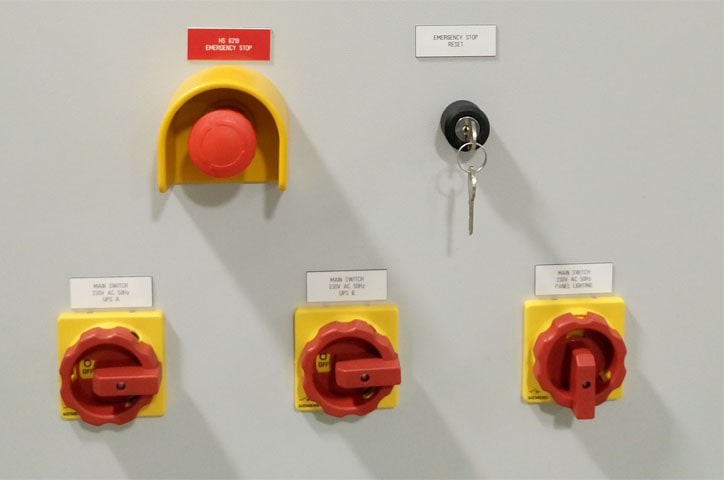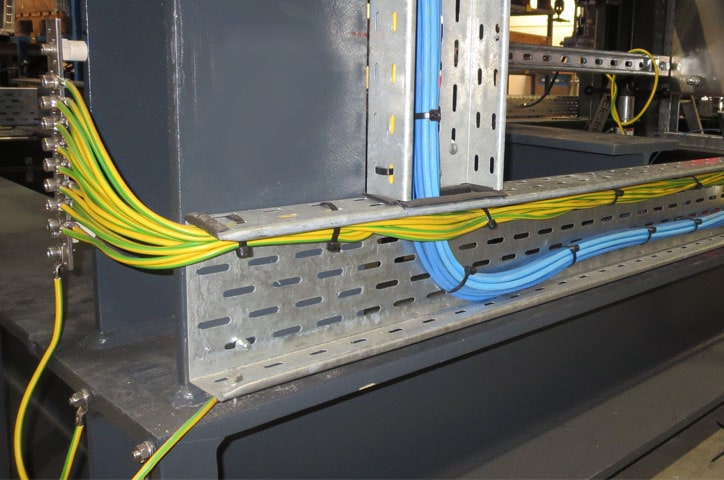
HAZOP is a systematic, critical examination of a process to assess the hazard potential of mal-operation or mal-function of individual items of equipment and the consequential effects on the facility as a whole.
HAZOP stands for Hazard and Operability. It is a method of study for identifying hazards and operability problems in many operational situations ranging from chemicals and fuels processing through to electrical and machinery systems. It is also finding applications in the planning of operational activities such as emergency response and disaster management.
Without an effective analysis, potential hazards may not be discovered before they result in injuries and losses. The cost of an accident is often many times greater than the cost of the analysis that could have been stopped it.
For a new facility, ideally a HAZOP workshop would be carried out as late as possible in the detailed design stage when P&IDs are almost complete, but still allowing sufficient time for HAZOP recommendations to be considered and incorporated into the design.
The standard IEC 61882:2016 provides a guide for HAZOP studies of systems using guide words. It gives guidance on application of the technique and on the HAZOP study procedure, including definition, preparation, examination sessions and resulting documentation and follow-up.
Requirements
- Data: The HAZOP requires detailed plant descriptions, such as drawings, procedures, and flow charts. A HAZOP also requires considerable knowledge of the process, instrumentation, and operation, and this information is usually provided by team members who are experts in these areas.
- Staff: The HAZOP team is ideally made up of 5 to 7 professionals, with support for recording and reporting and a team leader. For a small plant, a team as small as two or three could be effective.
HAZOP Workshop
In preparation for the HAZOP workshop, the facilitator will have agreed with the client/project on:
- Terms of reference.
- Documents required.
- Team membership and availability.
- Team Structure.
- Team attitudes.
- Estimated duration of workshop.
- Venue for workshop meetings.
- Reporting method.
- Scope of work.
- Timing of HAZOP Studies.
HAZOP team
A HAZOP study is a team work. The team leader assures that the HAZOP methodology is used effectively and productively. The IEC 61882 standard describes the study leader’s skills and duties as follows.
The team leader should:
- Be trained and experienced in leading HAZOP studies.
- Be responsible for communications between project management and the HAZOP team.
- Plan the study.
- Agree to the study team composition.
- Ensure that the study team is supplied with a design representation package.
- Make sure all required reference documents are available at the HAZOP Study.
- Suggest guidewords and guideword-element/characteristic interpretations to be used in the study.
- Conduct the study.
- Ensure the results are documented.
- Issue the HAZOP report after the meeting.
- Follow-up to make sure all actions are taken.
- Set up the Final Safety Review meeting
The basic minimum for HAZOP Study team:
- The study leader
- Recorder or “scribe”.
- Designer (process engineer, control engineer, mechanical engineer etc according to project).
- Project engineer (may also be designer).
- User (commissioning manager or production manager).
- Instrument /controls engineer.
- SHE expert (mandatory in some countries).
- Contractor and Client representatives.
Pre-HAZOP Meeting
It is wise for the Study Leader to meet with the Process Engineer in advance of the actual study to assure himself that he has a good grasp of what the process is all about, and to agree a mutually acceptable basis for dividing up the P&ID into short sections suitable for individual study.
At the pre-HAZOP meeting it is good to make up one copy of the P&ID with the division into short sections, and to record any other comments or explanations the Study Leader might wish to record as an aid memoir.
The second copy of the P&ID will be put on the table at the HAZOP Study as a clean drawing, and any markings put onto it will be done in the presence of the HAZOP team. This second copy is then called the “HAZOP Master”.
While the Study Leader should be independent of those who are associated with the project or plant, he should take time before the HAZOP Study to brief himself with details of the project or plant, so that he does not waste the time of the HAZOP team asking unnecessary questions.
In order to make the HAZOP run effectively a number of pre-HAZOP activities must be carried out. The pre-HAZOP meeting is an essential component of these activities and normally involves the following:
- Identifying and Obtaining the Required Information
- Planning the Study Sequence
- Planning the Schedule
The pre-HAZOP meeting usually takes place between the HAZOP Study Chairperson, the Lead Process Engineer and often the Project Manager would be present.
HAZOP Records
- Record during the HAZOP Workshop
- Record comprehensively
- Record format and content.
Technical Secretary and MOM
The role of the Technical Secretary is to take the Minutes of the Meeting (MOM). This is a key responsibility as the HAZOP MOM are the core of the Study, the main points are noted.
Quality HAZOP Reports
Reporting: Depending upon the client/project, the required format of the report may vary. Contents of the Report: The contents list is based on descriptions in IEC 61882 and EPSC guide.
Hazard Identification and Risk Management
Hazard analysis is used to help quantify the risks associated with a hazard. The task of Hazard analysis includes.
- Estimating how often an incident (Hazardous event) will occur.
- Estimating the consequences to persons, environment and plant.
- Deciding on the required amount of risk reduction (if any).
Guidewords and parameters
| GUIDE WORDS Meaning | |
|---|---|
| NONE |
No forward flow when there should be, i.e. no flow or reverse flow. |
|
MORE OF |
More of any relevant physical property than there should be, e.g. higher flow (rate or total quantity), higher temperature, higher pressure, higher viscosity, etc. |
|
LESS OF |
Less of any relevant physical property than there should be, e.g. lower flow (rate or total quantity), lower temperature, lower pressure, etc. |
|
PART OF |
Composition of system different from what it should be, e.g. change in ratio of components, component missing, etc. |
|
AS WELL AS MORE THAN |
More components present in the system than there should be, e.g. extra phase present (vapour, solid), impurities (air, water, acids, corrosion products), etc. |
|
REVERSE |
A parameter occurs in the opposite direction to that for which it was intended e.g. reverse flow. |
|
OTHER THAN |
Complete substitution e.g. sulphuric acid was added instead of water. |
|
EQUIPMENT WORDS “OTHER” |
What else can happen apart from normal operation, e.g. start-up, shutdown, uprating, low rate running, alternative operation mode, failure of plant services, maintenance, catalyst change, etc. |
Table 1. Guide words.
The GUIDEWORDS are applied to a range of process PARAMETERS. Usually only a limited number of combinations of guidewords and process parameters are used. The most used process parameters are FLOW, PRESSURE, TEMPERATURE and LEVEL, others will be tested and used on a case by case basis if required.
Process Parameters:
- Flow
- Pressure
- Temperature
- Level
- Time
- Composition
- pH
- Speed
- Frequency
- Viscosity
- Voltage
- Information
- Addition
- Separation
- Reaction
Each guide word is combined with relevant process parameters and applied at each point (study node, process section, or operating step) in the process that is being examined. The following is an example of creating deviations using guide words and process parameters:
| Guide Words | Parameter | Deviation |
|---|---|---|
|
NO |
+ FLOW | = NO FLOW |
|
MORE |
+ PRESSURE | = HIGH PRESSURE |
|
AS WELL AS |
+ ONE PHASE | = TWO PHASE |
Table 2. Deviations example.
| Parameter | Root | Application | Example |
|---|---|---|---|
|
Flow |
None |
No Flow |
Wrong routing, complete blockage, slip plate, incorrectly fitted non return valves, burst pipe, large leak equipment failure. |
|
Temperature |
More OF |
More Temperature |
Higher than normal temperature, fouled cooler tubes, cooling water temperature wrong, cooling water failure. |
Table 3. Guide Words example.
Taking the HAZOP actions
This is very straightforward if the action to be taken is obvious and involves the change of a small detail, which can be implemented by one of the study team.
It is more difficult if the action has to be taken by someone who has not been present at the study. In this case, it is clear that the action needs to be recorded in such a way that the action required is completely defined and self-explanatory to the person who has to implement it.
In fact, a HAZOP Study Report needs to be a verifiable record of the study, and all the statements made, especially the actions requested, need to be written so that they are readily understood by people who were not at the meeting.
There is a difficulty when someone is asked to investigate a particular problem raised, but might also change the rest of the design in such a way that a new potential hazard is now possible.
A great responsibility therefore devolves upon the Study Leader or the Project Engineer, or whoever has the responsibility for incorporating the changes proposed into the revised issue of the P&ID. If anything more than trivial changes are proposed, it is wise to re-assemble the HAZOP Study Team, to check that the changes proposed as a result of individual investigations do not over-ride the safeguards, which have been assumed to have been present, when the rest of the study was done.
Final HAZOP Close-Out-Meeting
In order to make sure that the actions requested at the HAZOP Study have been taken, and at the same time that the actions requested as a result of the subsequent investigations have not invalidated the original study, it is desirable to hold a HAZOP Actions Close-Out Meeting.
At this review the revised P&IDs, ready for issue are on the table and all team members have the HAZOP Report Sheets in their hands. The review consists, in the first instance, of going one by one through the HAZOP action requests, making sure that the action has been taken, and that the new drawing takes into account any changes required.
It may be desirable at the end of the Final Safety Review to require all the HAZOP Study Team to sign the new revised P&ID as a sign that they have jointly checked and approved the amended version of this drawing. The usual procedure is for the HAZOP Actions Close-Out Sheets to be completed. The meeting is held and each action taken is read out and approved by the HAZOP team. The HAZOP Study Leader then signs, and dates the action. In this way all the actions are accounted for. Strictly according to HAZOP protocol the P&ID’s may not be issued for construction/building until the HAZOP Actions have been closed out.
Time and cost
The time and cost of a HAZOP are directly related to the size and complexity of the plant being analyzed
Policy Issues: Additional issues that must be considered for a complete evaluation of the benefits and costs of food safety risk reductions relate to information, public versus private intervention, accurateness of illness estimates, marginal benefit-cost analysis and efficiency in production.



0 COMMENTS //
Join the discussion